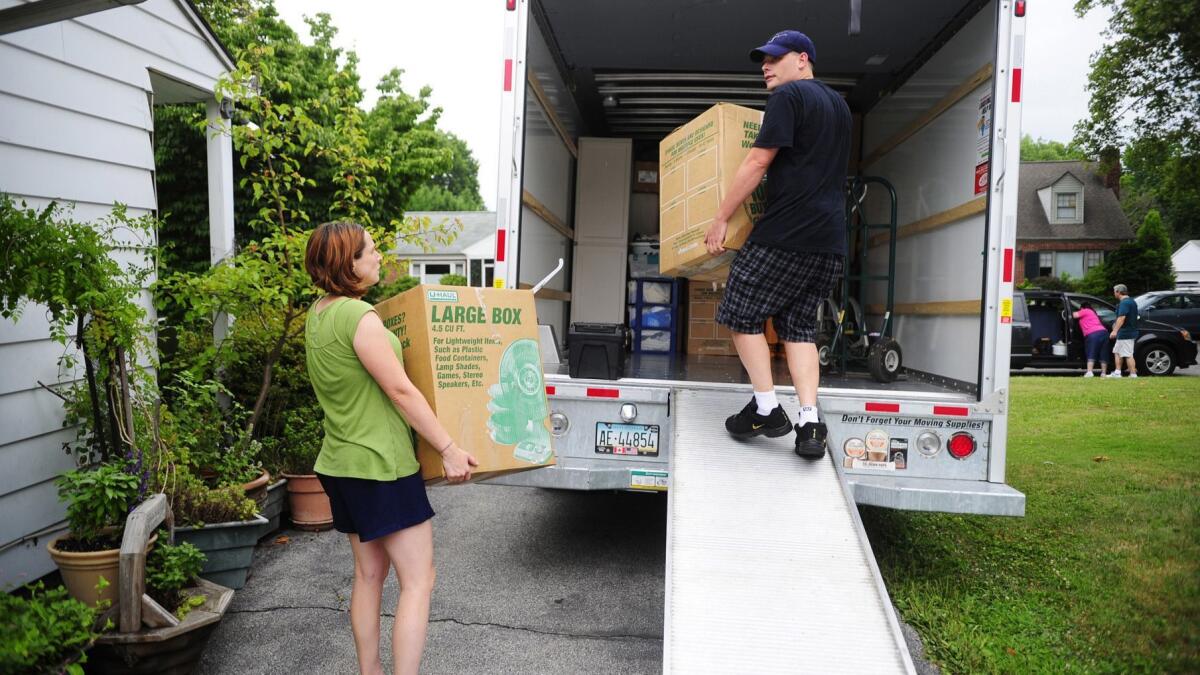Does bundling insurance mean you’ll save a bundle? Not always

- Share via
You’ve probably heard the “bundle and save” line from insurance companies, promising big discounts if you get all of your policies from the same carrier.
It’s often true that getting two or more policies from the same company will mean discounts — as much as 25% off homeowners insurance — depending on the insurer. Plus, bundling insurance policies is convenient because billing information and coverage details can be accessed from the same account for all policies.
For the record:
12:00 a.m. Oct. 8, 2018This article originally stated that poor credit can raise insurance rates more than a poor driving record. This doesn’t apply to residents of California, which is one of three states that don’t allow rates to be set based on credit scores.
But that convenience makes it easy to forget about your insurance, and that’s a sure way to end up paying too much.
Yes, bundling usually saves money
Companies that offer bundling tend to give a 5% to 25% discount on each policy. Homeowners insurance typically gets the biggest discount since your home’s value is likely far greater than your car’s.
“Most companies are really not interested” in selling just homeowners policies, says Michael McCartin, president of Joseph W. McCartin Insurance in Beltsville, Md., which sells policies from several carriers.
Carriers “have raised the rates of homeowners insurance, but offer a huge discount when you bundle everything together,” McCartin says. The auto insurance discount is often a lesser percentage, but it varies by company, he says.
For example, if your home and auto insurance is bundled, you might receive discounts of 10% on your auto policy and 15% on your homeowners insurance. If you bundled your auto insurance with a renters policy instead, you might see up to a 5% discount.
What happens when you’re not looking
Bundling policies encourages a “set it and forget it” mentality, but automatically renewing year after year with the same company could come at a cost. You’re less likely to check out competitors’ rates if you have to switch two policies instead of one, especially if one is paid automatically through a mortgage escrow account.
Prices tend to increase at policy renewal time, and they can inch up well beyond what you would pay with another company if you don’t check rates online or by phone.
Of course, not all insurance companies increase premiums until their customers are overpaying, and rates are bound to increase over time with any product. What really matters is whether your current company would do so — and if you don’t check, you’ll never know.
Different folks, states and rates
The question of whether to bundle goes deeper than convenience: Insurance pricing is highly individual, and much depends on where you live, your credit history and the value of the items you’re insuring.
“The reality is that the insurer who can provide you the lowest-cost home insurance is most likely not the one who can offer you the lowest-cost auto insurance,” says Kyle Nakatsuji, chief executive of Clearcover, an auto insurance startup.
Say your situation translates to a very expensive auto policy — maybe you drive a sports car or had a recent at-fault accident — but your house is modest and requires little coverage. If your carrier provides you with the cheapest car insurance possible, even if the homeowners rate isn’t as low as it could be, you’re probably still saving with the bundle.
But the script is flipped if your carrier’s auto insurance is pricey compared with other options in your area. A discount on an inexpensive homeowners policy — even 25% — could pale in comparison to the bigger savings you would get by breaking the bundle and choosing the cheapest auto insurance. After shopping and comparing rates for both, you might want to keep your home policy the same, but get your auto insurance elsewhere.
Be aware that some auto insurers offer discounts for having a homeowners policy in place and vice versa — even if it isn’t from them, Nakatsuji says, “so you’re still getting the benefits of bundling without the bundle.”
What you can do
You can try to avoid rate creep by shopping around for policies, both separately and bundled, every other year or:
- If you see a rate increase of 10% or more at renewal.
- Whenever you have a major life change, including marriage, divorce or a move.
- Just after the three-year anniversary of a moving violation, ticket or accident. McCartin says your price will reflect your status on the day you shop, and the three-year mark is typically when rates go back down.
When comparing quotes online, search for bundled and unbundled policies, and look for the same coverage as your current insurance.
You could also talk to an independent insurance agent like McCartin, who can compare policies and find apples-to-apples coverage. Just know that independent agents can’t get every quote available — some companies sell policies only through their own agents or online.
More to Read
Inside the business of entertainment
The Wide Shot brings you news, analysis and insights on everything from streaming wars to production — and what it all means for the future.
You may occasionally receive promotional content from the Los Angeles Times.








